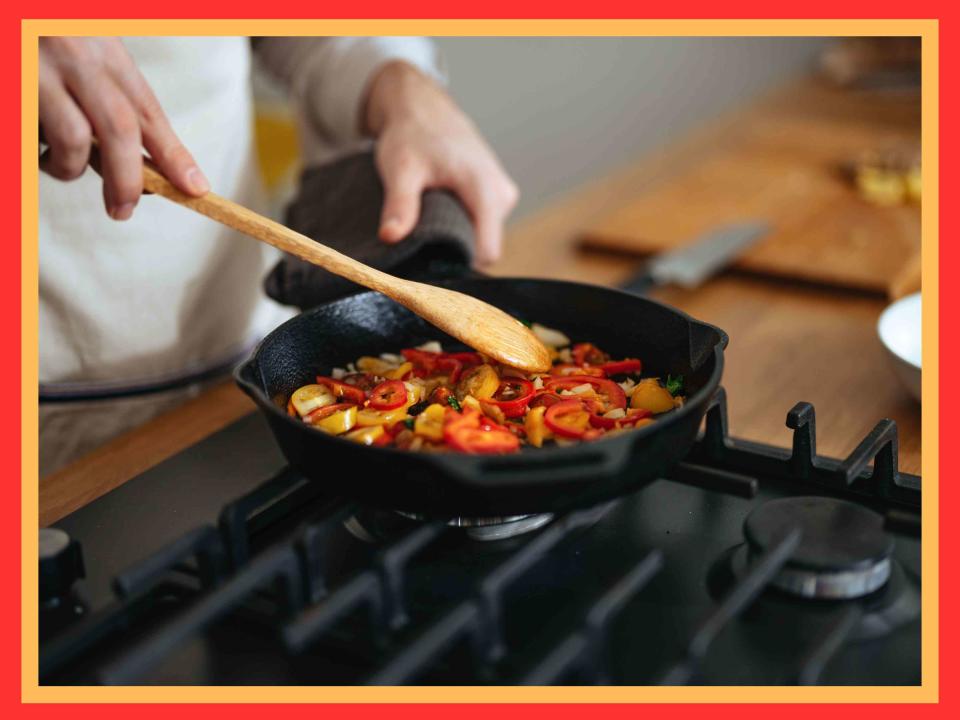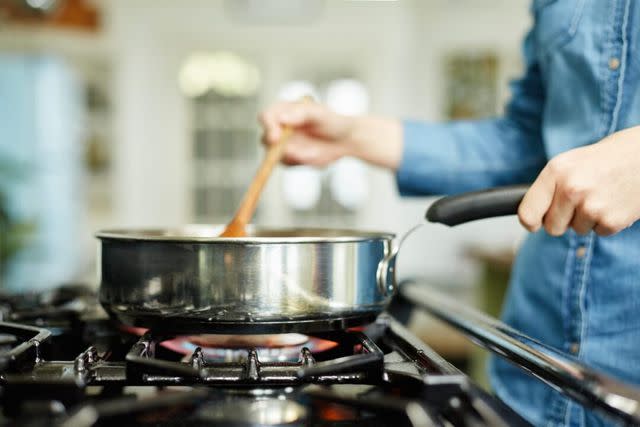I Just Moved Into An Apartment With a Gas Stove—Here's What I've Learned In the First Few Weeks
It's a whole new world.

Getty Images/Allrecipes
In my nearly three decades of life, I’ve used a lot of terrible, infuriating, lackluster stoves.
At my parents’ house, one particularly mean burner heats to its maximum temperature no matter what setting I choose, making it suitable only for boiling water or doling out an angry sear. In the apartments I’ve shared with my husband, the ancient stoves not only had similar heat regulation issues, but their old metal coils added structural chaos to the mix. They never quite slipped into the drip pans properly, always sitting at a tilt, sending eggs and butter and sauces pooling to one side of every pot or pan we used, despite our efforts to correct the problem.
Recently, we moved into a new place, and it’s an upgrade in many ways. The windows! The fireplace! The neighborhood! The in-unit laundry! And my, oh my, the beautiful gas stove.
I was intimidated by it at first, my excitement for better cooking experiences overshadowed by anxiety over a new, unfamiliar appliance. But now, I couldn’t be more content. While I am not an expert—and I urge you to consult one for true safety information—here’s what I’ve learned so far as a home cook.

The Heat Comes Fast
“Duh,” readers around the world say to themselves. “It’s a flame.” But there is such a learning curve as someone who is used to old coil burners—I don’t have to wait 10 minutes for butter to start to sizzle or for a sauce to start simmering like I did on the electric range. If you crank that heat, it’s there heating up your pot or pan almost immediately.
You’ll Have So Much Control
People always said this to me, but I was unprepared for truly how much immediate control I would have over the heat at any given time. The lightest touch can take us from a boil to a simmer or kill the heat on something that needs quick action.
The Spark Igniter Will Need Cleaned
After cooking on the gas range for a couple of weeks, our most-used burner stopped igniting. Click, click, click, but no flame. I was immediately worried that something major was wrong, but it turns out the self-igniter just needed a little cleaning. I made sure all the burners were off, removed the burner cap, and used a plastic toothpick to remove any food that had collected and was interfering with my flame. It didn’t feel like I was doing much, but as soon as we tried again, the flame readily ignited.
They’re Not as Intimidating As I Thought
As an anxious gal, I was equal parts excited and concerned about the stove. Would I accidentally leave the burners on? Would my dog be able to accidentally bump into the knobs and turn on the gas? There are also potential health and environmental concerns tied to regular use of gas stoves to consider. But weeks in, I’m not agonizing about it on a daily basis nearly as much as I thought I would. We take basic precautions like using fans, checking burners after we wrap up meals, refraining from hanging any towels or oven mitts too close to where the flames will be—and we simply enjoy the food.
Read the original article on All Recipes.


